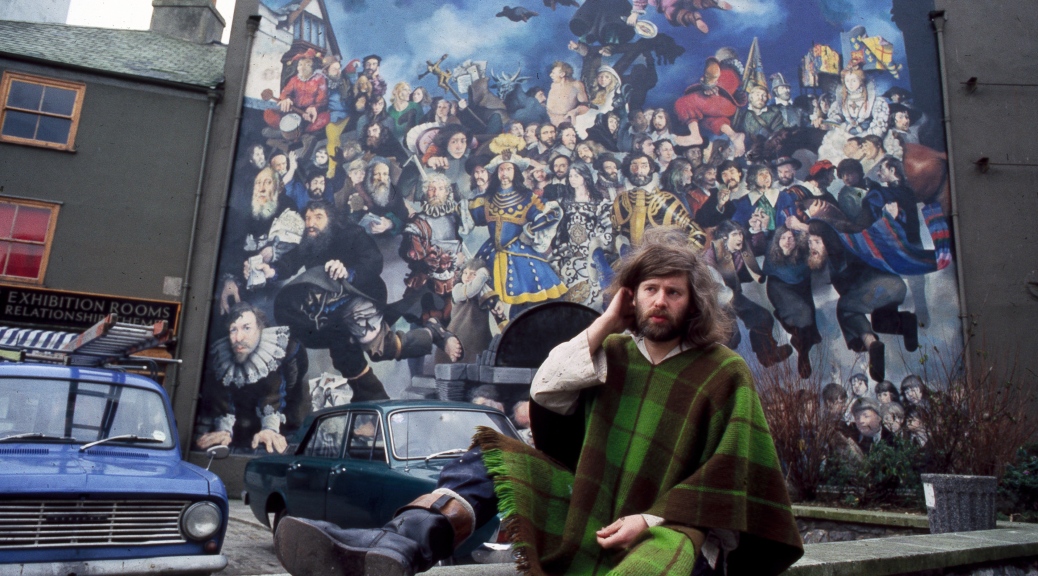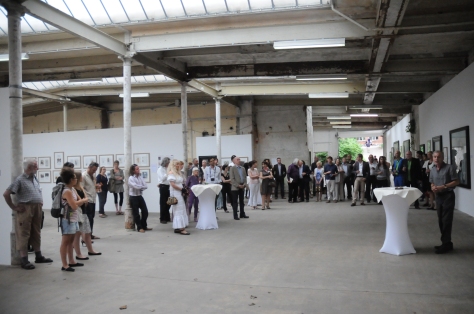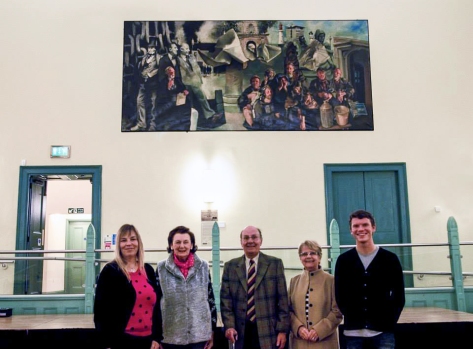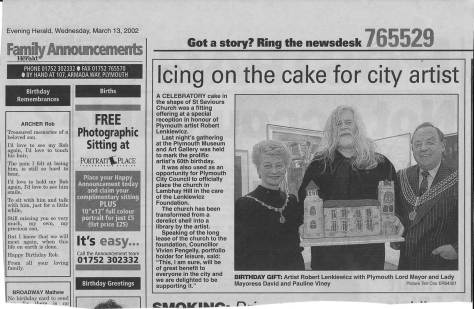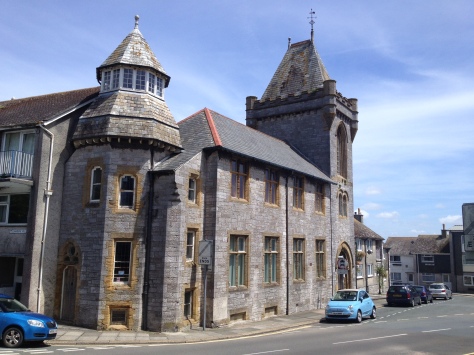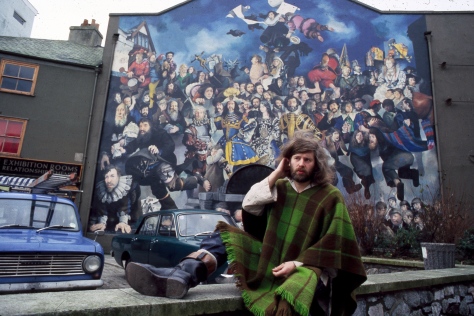Flameworks is a burgeoning artists’ workshop, a haven for the makers, creators and do-ers in Plymouth. We popped by for a visit and were blown away by this vibrant community. Read on for our feature on Flameworks, including an interview with Managing Director Gabi Marcellus-Temple.
Just standing in Flameworks’ metal workshop is a sensory overload. The sharp singe of stressed metal burns my nostrils, and the heat of the forge washes across the narrow passageway. To my right, a hammer strikes – I can feel the vibrations shudder through the soles of my shoes. Smelling of alchemy and magic, this feels like a true sculptor’s dream, a warren of artists creating intricate and bold artworks. Around the corner, an artist manipulates an inch-long sliver of metal over a blue-white flame, while a jeweller delicately taps at a piece of gold next door. There are potters and ceramicists across the hall, and upstairs a painter works on a stunning portrait, soft and detailed at the same time.
 Two children learning how to throw pots
Two children learning how to throw pots
Founded in 2000 by a group of metalworkers seeking a workshop, Flameworks has grown to include painting studios, a ceramics workshop, hot and cold metalworking facilities and educational events. With the city aiming to retain more of it’s talented graduates and artists, the studio offers incredible facilities and workspace to university and college leavers.
Situated on Richmond Walk, Flameworks backs onto Stonehouse Creek and overlooks Princess Yachts. The industrial stetting is ideal for this particular community – if an artist is rushing to complete work for a show, he can use a hammer drill at 3 in the morning without disturbing anyone’s beauty sleep. Flameworks is also a rare facility in that artists have the space and equipment to construct large-scale artworks.
 Pete from PCQ Arts (who share office space with Flameworks) with two people from the Campaign for Disability Awareness, a group PCQ work with. The robot behind was made from scrap by Rob Hills, an associate member who works from the forge at Seale Hayne, working with students with visual and hearing impairments
Pete from PCQ Arts (who share office space with Flameworks) with two people from the Campaign for Disability Awareness, a group PCQ work with. The robot behind was made from scrap by Rob Hills, an associate member who works from the forge at Seale Hayne, working with students with visual and hearing impairments
We managed to chat to Gabi Marcellus-Temple, the managing director of Flameworks, to see what it’s really all about.
How would you describe Flameworks?
Working at Flameworks every day, it’s easy to forget what an amazing place it is. When people visit for the first time, you get a real sense of their wonder, you realise how rare it is to see metalworkers forging red hot steel, massive installations of architectural glass being designed, raku ceramics plunged into flaming sawdust straight from the kiln – all in one day, all in one place! Flameworks really is a unique facility and a unique community of artists. But, apart from our studio holders, it’s also a strong support network – we deal with all kinds of enquiries from all kinds of people and we’re involved in a constant process of development, striving to find out what our members want, what the public want, and working hard to achieve it.
What has been your biggest project so far?
It depends what you mean by ‘big’, really! Many of our artists regularly work on some huge commissions – in terms of significance, as well as scale. Paul Ager, a metalworker, is often working on intricate, large-scale architectural features for properties around Europe – currently a beautiful staircase. He’s also built installations for well-known artists and institutions. I remember when Noah Taylor and Zoe Coles made an octopus, a mermaid and a whole host of sea creatures for the aquarium – they had to build a new studio to accommodate the work and experiment with latex seaweed and glowing coral lights!
We were closely involved in the development of Ocean Studios, so it’s wonderful to see the project finally coming to fruition – we can’t wait for them to open, the two projects are the perfect complement to each other.
Public art commissions and educational projects can also be immensely rewarding – it’s great when you see young people or adults with difficulties suddenly really engaged. It’s hard not to engage with hot metal, fire and hammers! It’s also fantastic when you see the pride a community takes in new sculpture or even signage which they’ve had a hand in designing.
We’ve also got some great projects in development, working with partners to bring international students to Plymouth, an immense project involving arts and healthcare and we’re working on exhibiting internationally and creating more links to the rest of Europe.
 Flamework’s Education Director, SEN teacher and ceramicist Christina Peters, fire breathing at the Forge Demons’ Masquerade, an event Flameworks held at the end of August as part of Visual Arts Plymouth’s Open: 4 evening
Flamework’s Education Director, SEN teacher and ceramicist Christina Peters, fire breathing at the Forge Demons’ Masquerade, an event Flameworks held at the end of August as part of Visual Arts Plymouth’s Open: 4 evening
What’s been your proudest moment at Flameworks?
It’s hard to pin down one specific moment – there’s always a great sense of achievement, for example, when you put on an exhibition and you get the point where you’ve successfully transformed a run-down, vacant property into a really professional show full of exquisite work. But I think the most rewarding times are when someone achieves something which they never thought would happen. Some of our artists ran a Bronze Arts Award course for young offenders when I’d just started at Flameworks and I remember one of them telling me that, when they all passed, one of them rang his mum and said ‘mum, I did it! I f****** passed!’ It was a first for him – it can be very discouraging working in the arts, especially in terms of financial sustainability and low incomes, but things like that make it worthwhile.
What can we expect to see from Flameworks in the future?
A lot! As part of our on-going redevelopment, the whole organisation is really pulling together – we’ve been working on some incredibly ambitious projects which will make a big difference to the arts in Plymouth and our members are getting more and more involved and coming up with some amazing plans and ideas for our future. Through these plans and objectives, we intend to achieve a financially sustainable position and secure our location at Richmond Walk so we can improve our facilities, making more available to the public, and expand.
We’re also expanding our exhibitions and events programmes, so more days when the public can come down and have a go, more courses to sign up for, more non-commercial exhibitions and more work from local artists and makers on show and on sale.
Is there anything you’d like to say to the people of Plymouth?
Come and see us! We’re open by appointment, so give us a call or send us an e-mail and we can show you round our facilities and let you know what we do. Have a look at our website (www.flameworks.org), which will soon include an online shop. And don’t forget to look out for regular events, including making days, performances and, of course, our regular exhibitions.


























